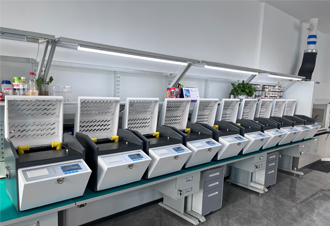 English
English



-
 Afrikaans
Afrikaans -
 Albanian
Albanian -
 Amharic
Amharic -
 Arabic
Arabic -
 Armenian
Armenian -
 Azerbaijani
Azerbaijani -
 Basque
Basque -
 Belarusian
Belarusian -
 Bengali
Bengali -
 Bosnian
Bosnian -
 Bulgarian
Bulgarian -
 Catalan
Catalan -
 Cebuano
Cebuano -
 China
China -
 China (Taiwan)
China (Taiwan) -
 Corsican
Corsican -
 Croatian
Croatian -
 Czech
Czech -
 Danish
Danish -
 Dutch
Dutch -
 English
English -
 Esperanto
Esperanto -
 Estonian
Estonian -
 Finnish
Finnish -
 French
French -
 Frisian
Frisian -
 Galician
Galician -
 Georgian
Georgian -
 German
German -
 Greek
Greek -
 Gujarati
Gujarati -
 Haitian Creole
Haitian Creole -
 hausa
hausa -
 hawaiian
hawaiian -
 Hebrew
Hebrew -
 Hindi
Hindi -
 Miao
Miao -
 Hungarian
Hungarian -
 Icelandic
Icelandic -
 igbo
igbo -
 Indonesian
Indonesian -
 irish
irish -
 Italian
Italian -
 Japanese
Japanese -
 Javanese
Javanese -
 Kannada
Kannada -
 kazakh
kazakh -
 Khmer
Khmer -
 Rwandese
Rwandese -
 Korean
Korean -
 Kurdish
Kurdish -
 Kyrgyz
Kyrgyz -
 Lao
Lao -
 Latin
Latin -
 Latvian
Latvian -
 Lithuanian
Lithuanian -
 Luxembourgish
Luxembourgish -
 Macedonian
Macedonian -
 Malgashi
Malgashi -
 Malay
Malay -
 Malayalam
Malayalam -
 Maltese
Maltese -
 Maori
Maori -
 Marathi
Marathi -
 Mongolian
Mongolian -
 Myanmar
Myanmar -
 Nepali
Nepali -
 Norwegian
Norwegian -
 Norwegian
Norwegian -
 Occitan
Occitan -
 Pashto
Pashto -
 Persian
Persian -
 Polish
Polish -
 Portuguese
Portuguese -
 Punjabi
Punjabi -
 Romanian
Romanian -
 Russian
Russian -
 Samoan
Samoan -
 Scottish Gaelic
Scottish Gaelic -
 Serbian
Serbian -
 Sesotho
Sesotho -
 Shona
Shona -
 Sindhi
Sindhi -
 Sinhala
Sinhala -
 Slovak
Slovak -
 Slovenian
Slovenian -
 Somali
Somali -
 Spanish
Spanish -
 Sundanese
Sundanese -
 Swahili
Swahili -
 Swedish
Swedish -
 Tagalog
Tagalog -
 Tajik
Tajik -
 Tamil
Tamil -
 Tatar
Tatar -
 Telugu
Telugu -
 Thai
Thai -
 Turkish
Turkish -
 Turkmen
Turkmen -
 Ukrainian
Ukrainian -
 Urdu
Urdu -
 Uighur
Uighur -
 Uzbek
Uzbek -
 Vietnamese
Vietnamese -
 Welsh
Welsh -
 Bantu
Bantu -
 Yiddish
Yiddish -
 Yoruba
Yoruba -
 Zulu
Zulu
tap change in transformer
Understanding Tap Changes in Transformers
Transformers are essential components in electrical power systems, enabling the transmission and distribution of electricity over long distances while maintaining the requisite voltage levels. One of the critical features of transformers is their ability to adapt to fluctuating load demands and voltage conditions. This adaptability is primarily achieved through a mechanism known as tap changing.
What is Tap Changing?
Tap changing refers to the process of adjusting the transformer’s turns ratio to either step up or step down the voltage output. This is accomplished by altering the connections (taps) on the primary winding of the transformer. By selecting different taps along the winding, the output voltage can be regulated to accommodate changes in load or to maintain a desired voltage level despite variations in supply voltage.
There are two main types of tap changers manual tap changers and automatic (on-load) tap changers. Manual tap changers require an operator to physically adjust the tap connections, which can be impractical for frequent voltage adjustments. In contrast, automatic tap changers can make these adjustments while the transformer is still in operation, allowing for real-time voltage regulation without interrupting power supply.
Importance of Tap Changing
The primary function of tap changing is voltage regulation. In power distribution, maintaining the voltage levels within specified limits is crucial for the stability of the electrical system and for the protection of connected equipment. Excessively high or low voltages can lead to inefficiencies, increased losses, and potential damage to electrical devices.
Additionally, tap changing plays a crucial role during peak load times. As demand for electricity fluctuates throughout the day, transformers must adjust their output to meet these variations. By shifting taps accordingly, transformers can ensure continuous supply without significant voltage drops or surges, thus enhancing the reliability of the electrical grid.
tap change in transformer

How Tap Changing Works
In practice, tap changers consist of several taps connected to the winding of the transformer. Each tap corresponds to a different turns ratio, which ultimately determines the voltage ratio between the primary and secondary sides of the transformer.
When a voltage adjustment is needed, the tap changer mechanism selects the appropriate tap. In automatic tap changers, this selection process is often controlled by a voltage sensing system that monitors the output voltage. When deviations from the desired voltage are detected, the control system activates the tap changer to shift to a higher or lower tap as required.
Challenges and Considerations
While tap changing is a highly beneficial mechanism, it also presents certain challenges. The mechanical and electrical stresses involved during the tap changing process can affect the longevity of the components. For this reason, robust designs and materials are essential for both the transformer and the tap changing mechanism.
Moreover, tap changers can introduce electrical disturbances during the switching process. These disturbances can lead to issues such as voltage transients, which may affect sensitive electronic equipment connected to the power system. Manufacturers have developed mitigating strategies, including using controlled switching technologies to reduce these disturbances.
Conclusion
Tap changing in transformers is a vital function that ensures voltage stability in power systems. By adjusting the turns ratio through taps, transformers can effectively respond to changes in load demand and maintain output voltage within acceptable levels. Whether through manual or automatic means, tap changing is an indispensable feature in the modern electrical landscape. As power consumption continues to rise and the energy sector evolves, the importance of efficient voltage regulation will only grow, making innovations in tap changing technology crucial for future developments in transformer design and operation.
-
Testing Equipment Industry Sees Major Advancements in 2025: Smart & Precision Technologies Lead the WayNewsJun.06,2025
-
Applications of Direct Current Generators in Renewable Energy SystemsNewsJun.05,2025
-
Hipot Tester Calibration and Accuracy GuidelinesNewsJun.05,2025
-
Digital Circuit Breaker Analyzer Features and BenefitsNewsJun.05,2025
-
Benefits of Real-Time Power Quality Monitoring Devices for Industrial EfficiencyNewsJun.05,2025
-
Earth Fault Loop Testing in High-Rise Building Electrical SystemsNewsJun.05,2025



